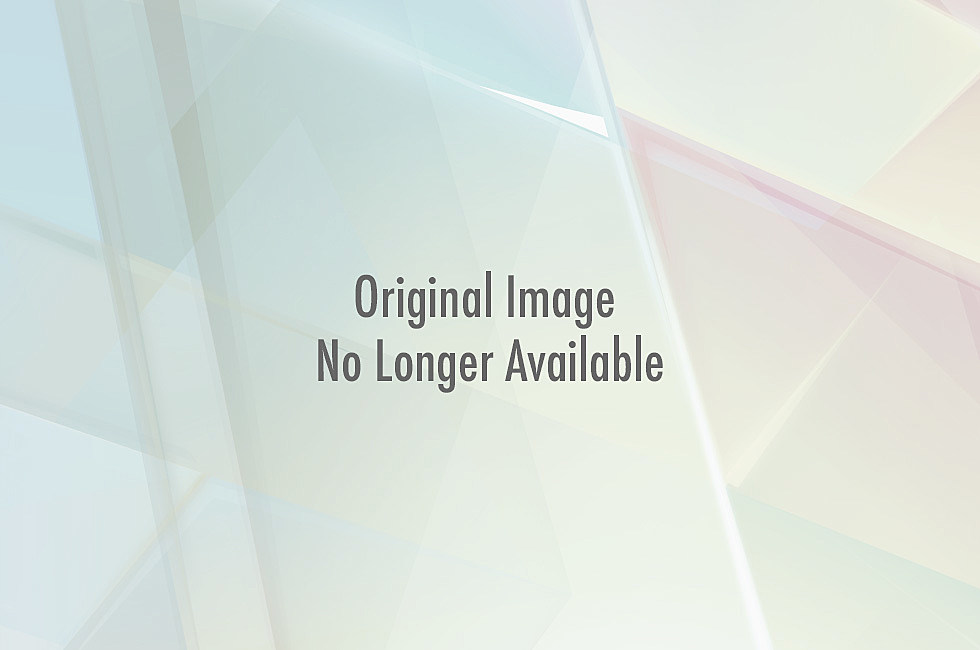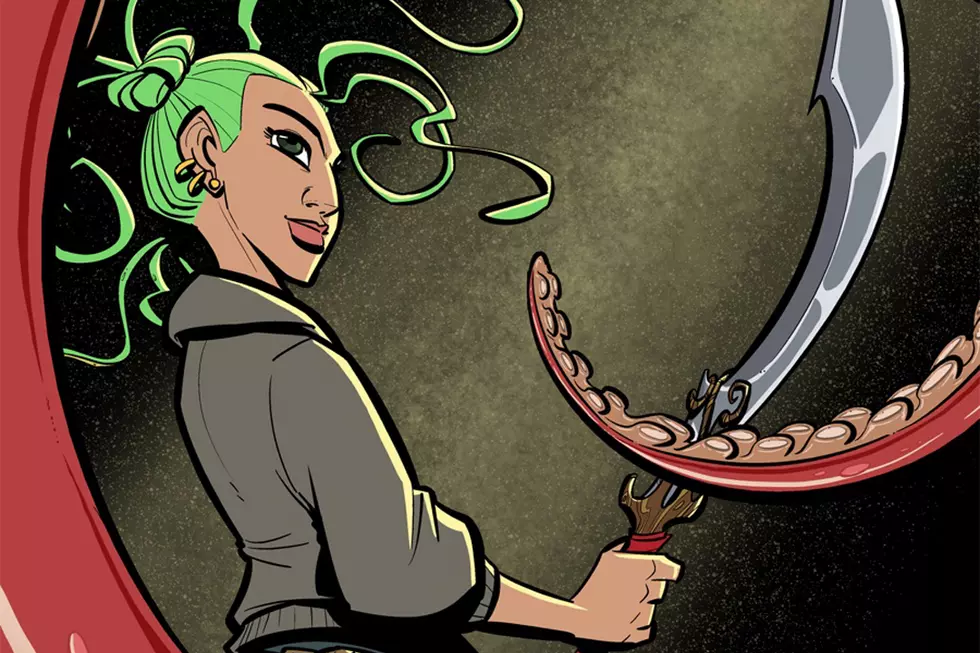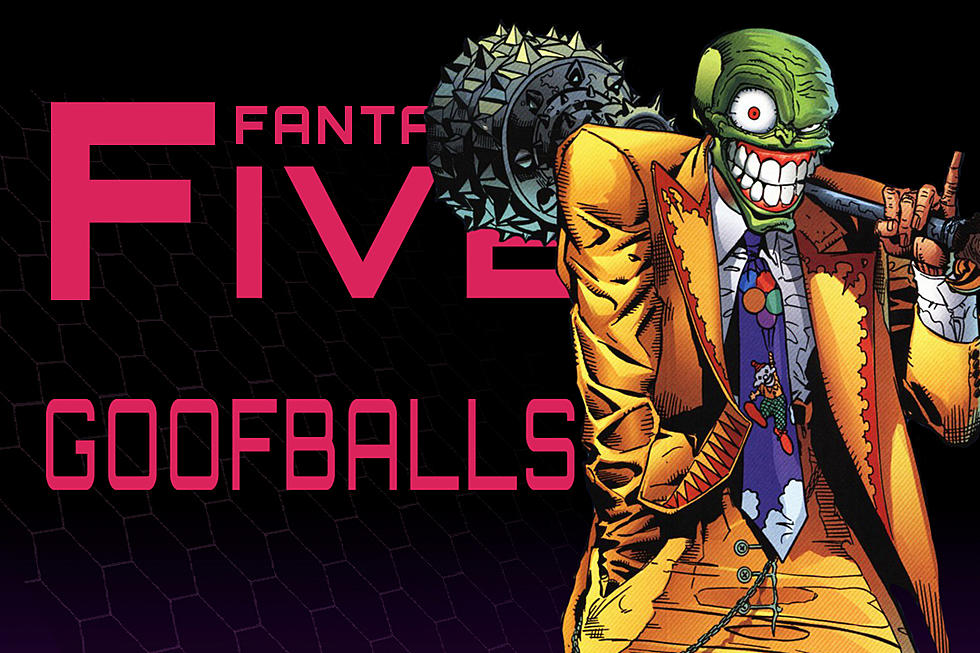
Evan Dorkin On ‘Mask-Tards,’ ‘Beasts of Burden’ and ‘Yo Gabba Gabba’
The Mask has always had sort of a love/hate relationship with Hollywood. The reality-warping face covering's cinematic explosion in 1994 vaulted the property to household name status for some time, but what Jim Carrey gaveth, Jamie Kennedy tooketh away with the Raspberry Award-winning 2005 sequel "Son of the Mask."
Naturally, The Mask isn't taking Tinsel Town's slight lying down. Yesterday's exclusive first look at The Mask's MySpace Dark Horse Presents return to comics showed just how vengeful the green-faced one can be, especially under the pen of Evan Dorkin. We got a hold of Dorkin to get his take on writing the character for the first time in more than a decade and discovered that he may, in fact, have been wearing the mask himself for portions of the interview. Read on to learn more about Dorkin's creative pursuits and goings on about town. Just don't say we didn't warn you.

ComicsAlliance: Can you tell us a little about how the "Englouorioues Mask-Tards" story came to be? Was it a case of reacting to a pitch request or did you already have the idea in mind in some capacity?
Evan Dorkin: Scott [Allie] sent me an e-mail asking me if I wanted to write a Mask strip. Which I did not want to do, and he knew I didn't want to do it, but he asked anyway. He kept asking and I'd keep turning him down, assuming at that point it was a gag and he was just giving me grief over it. At some point he sent me an e-mail with the subject header, "Englouorioues Mask-Tards." I don't remember how it unraveled from there, but I ended up writing a Mask strip called "Englouorioues Mask-Tards." The idea grew out of Scott's joke title, we worked it American International Pictures-style. Scott got Hilary Barta to draw it, and Dave Stewart colored it, and Nate Piekos lettered it, at least I believe he did, and that's the incredible story behind the comic. Can your heart stand such excitement? CA: Having worked on one of the earliest "The Mask" series (1995's "The Mask: The Hunt for Green October"), what was it like to pick up the character concept again in a new context?
ED: It didn't really register as a return to the character at all, to be honest, because The Hunt For Green October was a four-issue story, with characters, and a plot, and conflict -- all that boring stuff Aristotle bitched about -- and this strip is just a dumb three-page romp. Aristotle would not like it, I am pretty sure of that. He never wrote anything about comics, as far as I could Google, which I assume means he ignored the entire medium. His loss.
Anyway, I told Scott I was going to write the strip like a Milk and Cheese comic -- it's different from Milk and Cheese in many ways, but the violence and the energy and the overall use of stupidity is similar. But it was either that or a strip where the Mask cries and talks about his feelings and all the things he's been through and how its affected him very deeply. I know that's very big in serious adult adventure comics these days, but I wasn't in the mood for that, it's too much work and the page rate Dark Horse was paying me wasn't too spectacular, to be honest. So I set out to write a stupid comic. Which I think I succeeded in doing. Scott thinks so, too, at least I think he does, because he told me it was "execrable," which I'm pretty sure is a fancy editor-type way of saying excellent."

CA: This story is an interesting bit of satire given how the horrific violence contrasts the relatively light jabs taken at certain filmmakers. How tongue-in-cheek is the humor from your perspective? Is there any reverence in the irreverence?
ED: I think everything you've put on the table there is highly debatable -- whether or not this is an actual "story," whether the level of satire in the comic could be considered "light" or "heavy," as with various grades of maple syrup, or whether the level of violence on display is horrific or not, which has nothing at all to do with pancakes. Or Vermont, if that's where your thoughts lead you. Or Dave Madden, the actor who played Reuben Kincaid on The Partridge Family. Now, regarding the tongue in cheek aspects of the strip, or whether or not I have any perspective at all on any of this, or whether or not this is actual "humor" we're discussing here, etc , etc, et al -- I can't answer any of these questions, because I am a product of the New York public school system and don't understand any of them. I'm not sure about the "reverence" question, either. Is that a religious question? I'm not into those.
CA: One of the running gags in the strip is each panel's designated homage and soundtrack listings. Did you find yourself actually playing any of the songs you'd selected as you worked on the story? Do you mentally insert music into the things you're reading or working on yourself?
ED: 1) No. Mainly because my cassette player is broken at the moment. I'm supposed to get it back from the shop soon, which is cool because I just got some Dio bootlegs from Spain that I can't wait to hear.
2) I do not mentally or physically insert anything into what I'm reading or working on. I try to keep all my comic books in pristine "mint" condition so they'll go up in value.

CA: You've worked across a number of mediums, genres and styles as both an artist and a writer, but you're probably best known for your humorous works. What keeps you coming back to humorous content as a creator?
ED: The almighty dollar and my hundreds of fans.
CA: There's a fun "Milk & Cheese" cameo at the end of the story that seems right at home with the scene. Were there any other Easter eggs you considered for this strip that you didn't end up using? Anything fans of yours should keep an eye out for in the strip?
ED: I didn't put the Milk and Cheese cameo in the strip, Hilary Barta threw that in there to get me in trouble with Dark Horse. We're gonna settle this at this year's Chicago Comic Con with a duel. Something similar to the prison gladiator scene from "Ricochet" where John Lithgow and Jesse Venturra duct tape phone books all over themselves and fight with sharpened metal poles. Because that's how shit gets done in comics.
As far as background gags go, there really wasn't a ton of room for extra business in the strip, it was originally a two-page script and Scott and Hilary decided to open it up with another page, as it was super-packed. I wrote it for myself, meaning that I wrote it the way I'd have drawn it, cluttered and dense. I was given two pages and filled them up, but I'm more than happy that Hilary got the extra page and didn't have to squint so much. I'd rather ruin my own hand and eyesight than another cartoonist's. Well, actually, there's a few cartoonists whose hands I'd like to ruin, ha ha ha. That's a joke. Sort of. I'm very tired. What was the question again? No, no real Easter eggs. It isn't an Easter strip.

CA: I've chatted with a lot of folks from around comics who really dig "Yo Gabba Gabba!" What was your experience like contributing to the show? Did you have any idea of which celebrities would be cast for certain character roles? How do you think the final product came out?
ED: Working on "YGG" really has been terrific. Our five year-old daughter is a fan of the show and its really nice to work on something she enjoys so much. And we're fans as well. It's a fun show, made by really good people, and I think the show reflects that. As far as our involvement goes, we were initially asked to design the costume and comic book artwork for a live-action Super Martian Robot Girl segment. Nickelodeon didn't like the live-action footage and the decision was made to rework the shorts as Flash cartoons, using the recorded dialogue tracks. Sarah and I were brought back in to design and art-direct the cartoons. When season two started up, Christian Jacobs asked us if we wanted to write for the show, we ended up co-writing two episodes and two Story Time cartoons, one of which we art-directed. For season three, we co-wrote two more episodes and we got to write and design another SMRG cartoon. We also did some costume designs for the "Superhero" episode, although only one of them was used, which was the alien starfish.
As far as the celebrities go, we have no say in that, we just offered up suggestions for guests in certain roles, and for what bands we thought would be a good match for the episodes. But that's producer territory.
My apologies for answering this question in a straightforward manner. I'll try not to do it again.

CA: You and Jill Thompson wrapped your latest "Beasts of Burden" story not long ago. What's the rest of the year looking like for you in terms of comics or other projects? Any more "Beasts" on the horizon?
ED: I hope so, it's certainly something we're discussing. The hardcover collection ships in June, I'm hoping we'll know something positive by then. As far as other projects go, the Wednesday Comics collection will run a one-page Plastic Man file strip Stephen DeStefano and I did, and I have a pin-up in the Futurama/Simpsons collection coming out from Bongo. I'm actually doing quite a bit of work for Bongo these days, I've been writing scripts for the Bart Simpson comic for a while now and lasy year I started drawing some of them, as well. I just finished up a one-shot script that I hope will be published and scanned and uploaded and downloaded by cheapsters before the year's out. It's something I can't discuss at the moment, but hopefully a major, earth-shattering announcement will be made soon (I will, however, give your readers a hint: It is not Batman). I'm working on another script that I can't talk about yet, either (another hint: It is not Skateman). Other than that I'm still doing some small illustration jobs for Mad Magazine, and, of course, I'm spending time gearing up for that little Chicago event I mentioned earlier. Right now that consists mainly of trying to get my hands on a lot of phone books (honestly, it's not as easy as you'd think), but I start my sharpened metal pole training in April, sometime around the 11th or 12th. I'd have to get back to you on that.
More From ComicsAlliance

![‘Attack On Titan Anthology’ Unites Manga And Western Comics Artists [Exclusive Preview]](http://townsquare.media/site/622/files/2016/04/AOT-Featured.png?w=980&q=75)



![Nobody Cared About Those Jerky Humour Books: Evan Dorkin Looks Back On His ‘Bill & Ted’ Series [Interview]](http://townsquare.media/site/622/files/2015/10/BillAndTedExcellentComic007-0001.jpg?w=980&q=75)



